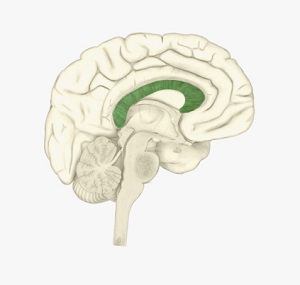Corpus Callosum
 The corpus callosum, also known as the great commissure, is a bundle of nerve fibers that connects the left and right hemispheres of the brain.
The corpus callosum, also known as the great commissure, is a bundle of nerve fibers that connects the left and right hemispheres of the brain.
Structure of the Corpus Callosum
The corpus callous is a brain commissure, which means that it connects brain sections. Other commissures in the brain include the anterior commissure, which connects the temporal lobes, and the posterior commissure, which connects the midbrain to the diencephalon. The corpus callosum is the largest and best-studied commissure. It is composed of white matter—tissue primarily containing glial cells and myelinated axons—and consists of bundled neural fibers.
Its primary role is to facilitate communication between the left and right hemispheres of the brain and is typically divided into four principal components:
- The posterior section is the splenium.
- The anterior section is the genu.
- The rostrum projects outward from the splenium.
- The isthmus is a thinned collection of tissue connected to the splenium.
Disorders of the Corpus Callosum
Psychiatrists and other medical professionals have studied the role of the corpus callosum for decades. Malformations of the corpus callosum can cause seizures and problems in brain functioning; however, people with such malformations are usually able to engage in most normal functions, and treatment consists chiefly of managing symptoms.
Severing a portion of the corpus callosum—corpus callosotomy or split brain surgery—has historically been used as a treatment of last resort for epilepsy. When the corpus callosum is severed, seizures generally do not spread from one hemisphere of the brain to the other, which can greatly reduce their severity and length. Severing the corpus callosum can lead to difficulties with speech and memory, although many people do not experience long-term side effects. Psychiatrists have studied the effects of corpus callosotomy and the role of the brain hemispheres using studies colloquially referred to as split brain studies.
References:
- American Psychological Association. APA concise dictionary of psychology. Washington, DC: American Psychological Association, 2009. Print.
- Audesirk, T., Audesirk, G., & Byers, B. E. (2008). Biology: Life on earth with physiology. Upper Saddle River, NJ: Pearson Prentice Hall.
Last Updated: 04-18-2016
- 2 comments
- Leave a Comment
-
Fayge
April 11th, 2020 at 8:56 PMCan a person without genuine, selenium, rostrum or isthmus have a career?
-
Harry
January 2nd, 2022 at 12:29 PMYES I have over 30 years in the military in Supply & logistics. I am retired
Leave a Comment
By commenting you acknowledge acceptance of GoodTherapy.org's Terms and Conditions of Use.
